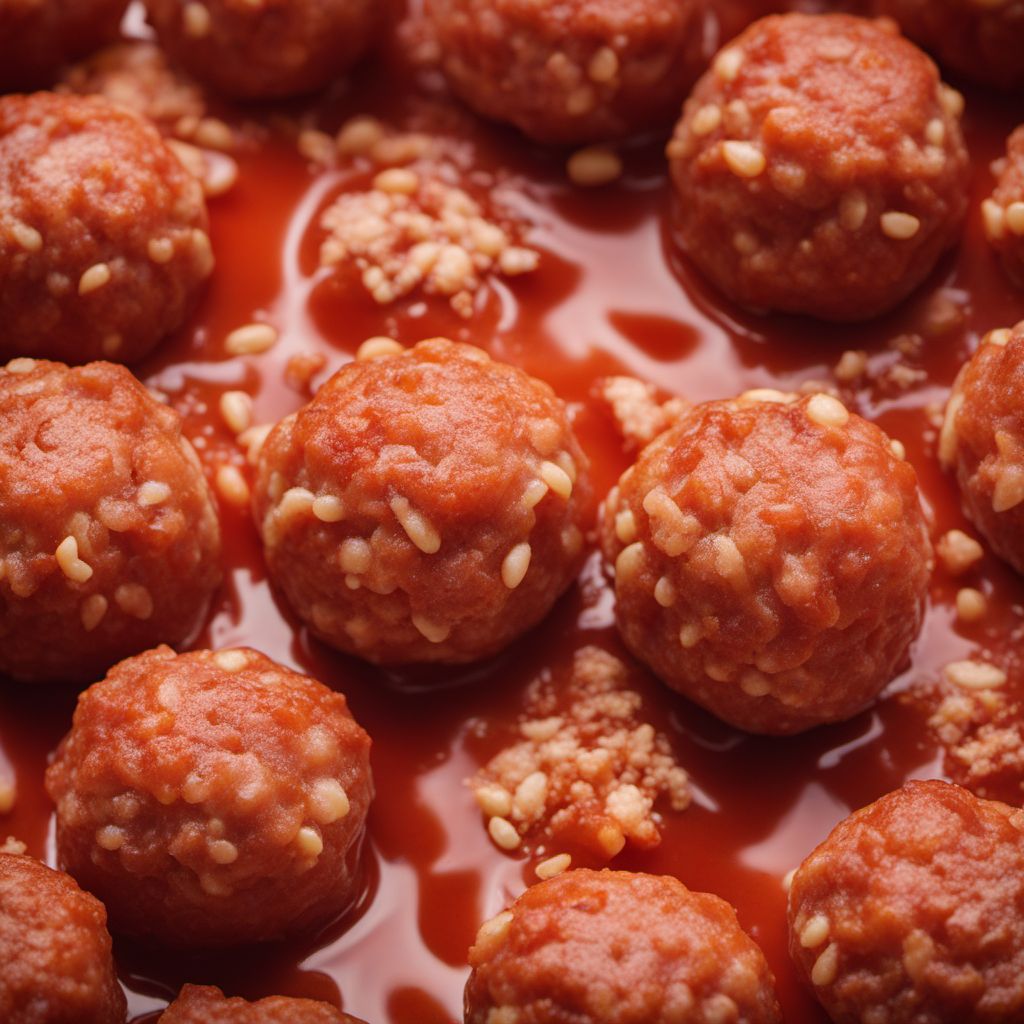
Ingredient
Meat balls
Savory Spheres of Meaty Delight
Meatballs are typically made by combining ground meat, such as beef, pork, veal, or a combination, with breadcrumbs, eggs, herbs, and spices. They can be seasoned in a variety of ways, from Italian-style with garlic and Parmesan to Swedish-style with nutmeg and allspice. Meatballs are often pan-fried, baked, or simmered in sauces, resulting in tender and juicy morsels that are perfect for pasta dishes, sandwiches, soups, or appetizers.
Origins and history
The exact origins of meatballs are difficult to trace, as variations of this dish exist in numerous cultures. Ancient Roman cookbooks mention recipes for minced meat formed into balls, and similar dishes can be found in Middle Eastern, Asian, and European cuisines. Meatballs have become a beloved comfort food worldwide, with each culture adding its own unique twist to the recipe.
Nutritional information
Meatballs are a good source of protein and can provide essential nutrients depending on the type of meat used. They can be a versatile addition to a balanced diet when prepared with lean meats and served with nutrient-rich accompaniments like vegetables or whole grains. However, it is important to be mindful of portion sizes and the overall balance of the meal.
Allergens
Meatballs may contain allergens such as eggs, gluten (from breadcrumbs), or dairy (if using cheese as an ingredient). Individuals with specific food allergies or intolerances should check the ingredients list or opt for alternative recipes that suit their dietary needs.
How to select
When selecting ground meat for meatballs, choose fresh, high-quality options. Look for meat that is bright in color, without any discoloration or unpleasant odors. Opt for lean cuts to reduce the fat content, or mix lean and fatty cuts for a balance of flavor and juiciness. If possible, purchase meat from trusted sources that prioritize animal welfare and sustainable practices.
Storage recommendations
To store cooked meatballs, allow them to cool completely before transferring them to an airtight container or freezer bags. Refrigerate them for up to 3-4 days or freeze them for longer storage. If freezing, it is advisable to separate the meatballs with parchment paper or plastic wrap to prevent them from sticking together.
How to produce
Producing meatballs can be done by anyone with basic cooking skills. Start by selecting the desired ground meat and seasonings. Combine the ingredients in a bowl, mix well, and shape the mixture into small balls. Cook the meatballs using the preferred method, such as pan-frying, baking, or simmering in sauce. Experiment with different seasonings and ingredients to create your own signature meatball recipe.
Preparation tips
Meatballs can be prepared in various ways, depending on the desired dish. They can be pan-fried for a crispy exterior, baked for a healthier option, or simmered in sauce for a tender and flavorful result. Meatballs can be served with pasta, rice, or mashed potatoes, topped with tomato sauce, gravy, or creamy sauces. They can also be used in sandwiches, soups, or as appetizers on toothpicks.
Culinary uses
Meatballs are widely used in various cuisines around the world. They are commonly found in Italian spaghetti and meatballs, Swedish meatball dishes, Middle Eastern kofta, and Chinese lion's head meatballs. Meatballs can be incorporated into pasta dishes, sandwiches, soups, stews, or enjoyed on their own as a flavorful appetizer.
Availability
Meatballs are available in most countries, as they are a popular dish in many cultures. They can be found in restaurants, cafes, and food stalls that specialize in international cuisine. Additionally, pre-packaged meatballs are often sold in supermarkets and grocery stores for convenient home cooking.
More ingredients from this category

Goulash
"Savor the Richness: Exploring the Hearty Delights of Goulash"

Meat terrine
The Savory Delight

Meat stew
Hearty Delight: Exploring the World of Meat Stew

Meat in aspic
Gelatinous Delight

Moussaka
The Mediterranean Delight

Meat burger (no sandwich)
The Savory Delight: Unleashing the Flavors of a Meat Burger

Meat loaf
Savory Meat Delight

Offal based dishes
"The Hidden Delicacies: Exploring the World of Offal-Based Dishes"